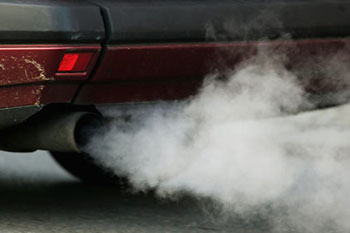All makes of diesel cars tested by the Department for Transport (DfT) produced significantly higher emissions of toxic nitrogen oxide (NOx) in real world tests than in labs, it has emerged.
The worst performing car models were up to 12 times more polluting on the road than in a lab, while even the best were almost twice as polluting in real world conditions.
On this basis those top performing models in real world conditions would scrape through new European legislation coming into effect in 2017, which would allow real-world emissions to exceed the lab-testing limit by up to 2.1 times.
Ministers also said they found no evidence of other manufacturers using the type of ‘defeat’ software used by Volkswagen.
Ministers suggested that the widespread use of engine management systems to prevent engine damage can lead to higher emissions in real world temperature conditions.

Real world emissions are known to be higher than those in lab tests
On behalf of the DfT, the Vehicle Certification Agency tested a representative selection of the UK’s top selling diesel vehicles in Germany and Britain over six months.
The tests confirmed that NOx emissions are higher in real world conditions and on the test track than they are in laboratory conditions.
According to the DfT: ‘This was the case for all manufacturers’ vehicles, with results varying significantly between different makes and models.’
Transport secretarty Patrick McLoughlin said: ‘Our tests published today have not detected evidence of manipulation of emissions lab tests as used by the VW Group by any other car manufacturer.
‘The tests do show the widespread use of engine management systems to prevent engine damage which can lead to higher emissions in real world temperature conditions cooler than those in the approved lab test.’
The report notes that the NOx limit in the current Euro 6 standard, introduced in 2014, is over 90% lower than the first standard in 1992.
It continues: ‘However emerging evidence has shown that the main reason that air quality standards have not improved, despite these increasingly stringent regulatory standards, is that vehicles in the “real world” are not performing as well as when tested in the laboratory’.
A sample of cars that has met the Euro 6 NOx limit of 80 mg per km in lab tests was subjected to on-road testing. According to the report, ‘the best results [were] less than twice this limit, while the worst are more than 12 times higher’.
The DfT claimed in a statement that: ‘From next year, vehicles will have to meet emissions limits in real driving conditions across a wide range of typical operating temperatures. This will improve consumer confidence in manufacturers.’
It then refers to the new European legislation for 2017, which would allow real-world emissions to exceed the lab-testing limit by more than 100%.
The UK and other governments have previously been accused of lobbying to maintain this type of loophole in the emissions rules.
Meanwhile, the BBC reports that the Mitsubishi emissions scandal has widened as the firm said further models may be involved.
At a press conference, the company's president Tetsuro Aikawa said more car models may have incorrectly measured fuel efficiency data than initially thought.
Register now for full access
Register just once to get unrestricted, real-time coverage of the issues and challenges facing UK transport and highways engineers.
Full website content includes the latest news, exclusive commentary from leading industry figures and detailed topical analysis of the highways, transportation, environment and place-shaping sectors.
Use the link below to register your details for full, free access.
Already a registered? Login